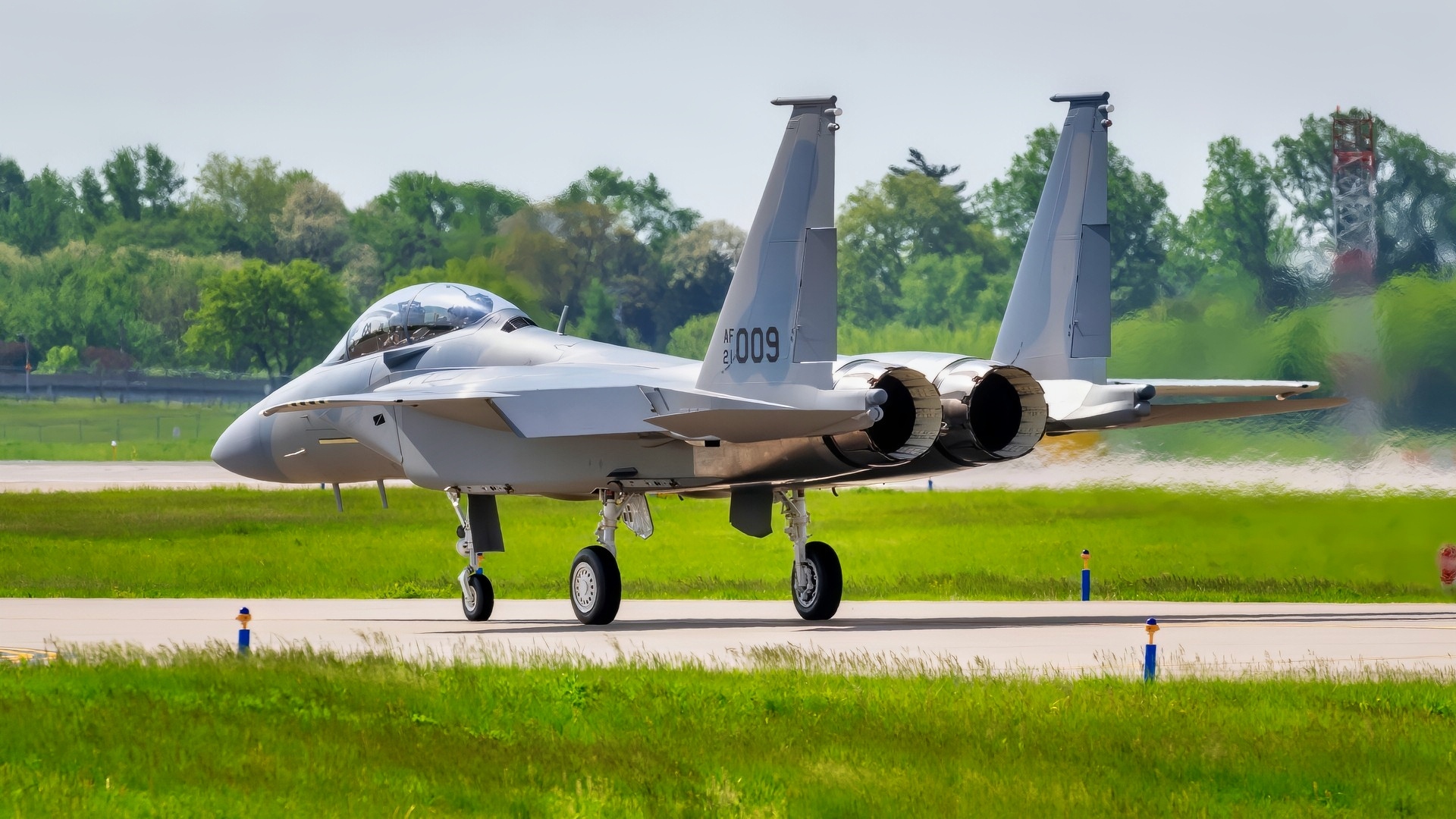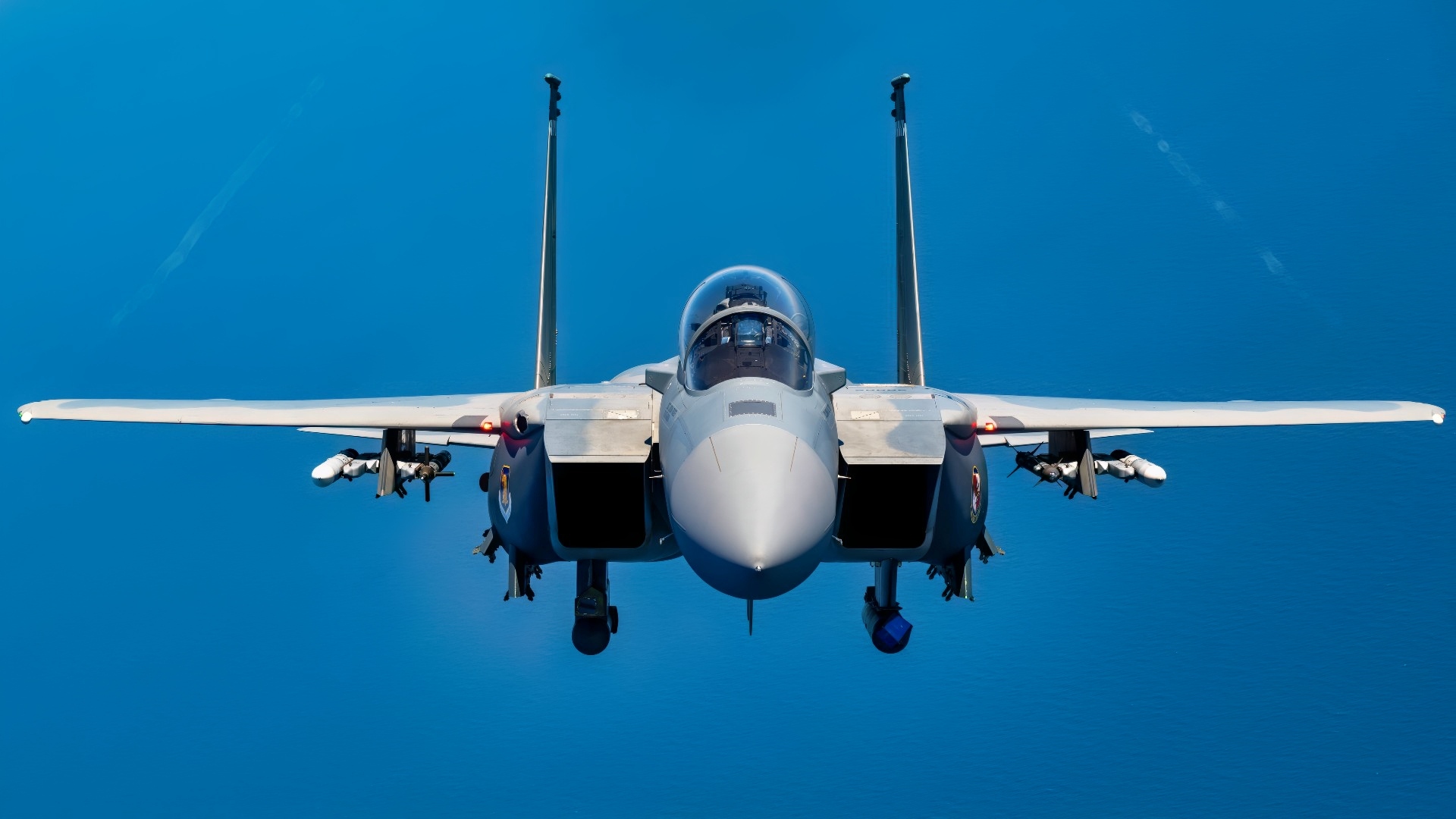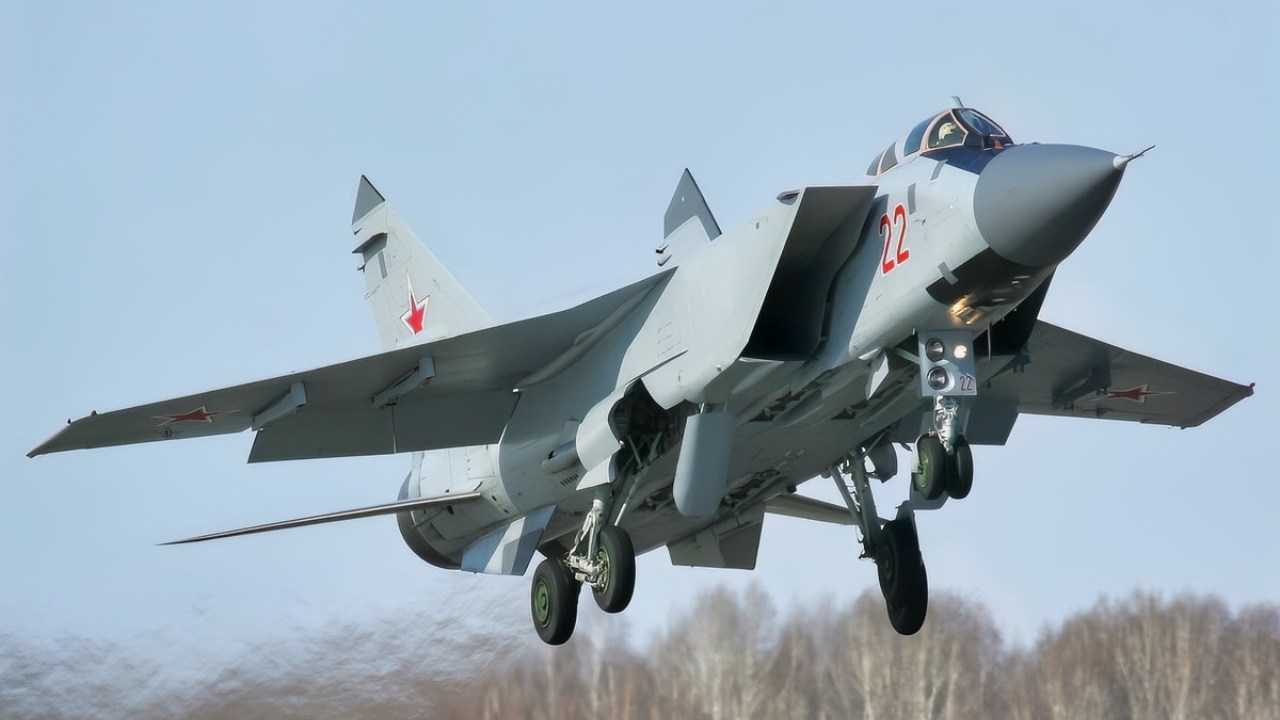Key Points and Summary – A 2025 ranking of the five fastest operational military aircraft places Russia’s MiG-31 Foxhound interceptor at #1, with a “stunning” top speed of Mach 2.83.
-It is followed by the U.S. F-15EX Eagle II (#2) at Mach 2.5, which is noted for its “massive” 22-missile payload.

F-15EX-9 in St. Louis Missouri, shortly before delivery to Portland Air National Guard Base, Ore. (Boeing/Eric Shindelbower)
-Russia’s 1970s-era MiG-23 Flogger (#3) is next at Mach 2.35, with its Soviet counterpart, the MiG-29 Fulcrum (#4), at Mach 2.3.
-Ironically, the U.S. F-22 Raptor (#5) is the slowest on the list at Mach 2.25, a “strategic blunder” due to its “prematurely halted” 186-jet production run.
Five Fastest Aircraft Currently In Operation Today
Modern air forces want two things from their fighter aircraft: stealth and speed.
Ever since the first fighters appeared, more than a century ago during World War I, speed has been critical.
Whether it’s an air superiority fighter designed to dominate the aerial battlefield, an interceptor optimized for climbing, or a long-range multirole aircraft, rapidly getting into action and outperforming the enemy is crucial.
Here’s a look at the fastest aircraft still in service. For a couple of the older Soviet/Russian models, only a handful of viable aircraft remain.
US F-22 Raptor
The U.S. F-22 Raptor has been the standard against which all fighter aircraft are measured for more than 20 years. It still sits at the top of the mountain for its dogfighting ability, stealth, supercruise, maneuverability, and integrated avionics.
The F-22 Raptor remains the world’s best pure fighter aircraft, but its service window is closing. The Air Force plans to replace the Raptor in 2030 with the F-35 and the Pentagon’s Next Generation Air Dominance fighter, the F-47.

U.S. Air Force F-22 Raptors assigned to the 27th Expeditionary Fighter Squadron and Philippine Air Force FA-50PH light jet fighters conduct joint combined exchange training, above Basa Air Force Base, Phillipines, on Aug. 9, 2024. Joint combined exchange training is critical to enhancing U.S. and Philippine Air Force interoperability in a free and open Indo-Pacific. (U.S. Air Force photo by Senior Airman Mitchell Corley)
“We’ve already built and flown a full-scale [sixth generation] flight demonstrator in the real world, and we broke records in doing it,” Will Roper, Director of the Pentagon’s Strategic Capabilities Office, told Defense News in 2020. “We are ready to go and build the next-generation aircraft in a way that has never happened before.”
However, the U.S. Air Force’s decision to prematurely halt F-22 Raptor production at just 186 aircraft was a strategic blunder that has created a dangerous air superiority gap.
What makes the F-22 great in a dogfight is the aircraft’s thrust vectoring capabilities.
Its two engines have specially designed nozzles at their ends that can move on a vertical plane to vector the aircraft’s 70,000 pounds of thrust in one direction even if the aircraft is heading in another, thus allowing the F-22 to do some impressive acrobatics. It also enables a high angle of attack during an engagement within visual range.
The Raptor can reach speeds of about Mach 2.25, or 1,500 miles per hour.
Russia’s Mikoyan MiG-29 Fulcrum
The MiG-29 was built by the Soviet Union to compete with the likes of the F-15 Eagle during the Cold War. It is a lightweight fighter with a range of 1,500 kilometers.
A lighter, more agile counterpart to the heavy Su-27, it was built to challenge American fourth-generation fighters such as the F-16.
Designed primarily as a high-speed interceptor, the MiG-29 prioritized speed and climb rate over range, reflecting Soviet tactical doctrine that emphasized rapid response to incoming threats.

MiG-29 Fighter. Image Credit: Creative Commons.
Its widely spaced twin engines not only provide the power necessary for impressive acceleration but also contribute to the aircraft’s legendary maneuverability, making it a dangerous opponent in close-quarters air combat.
It is also fast, with a top speed of Mach 2.3, or approximately 1,520 mph. This speed and its famed agility have made it a force in combat over the years.
Mikoyan-Gurevich MiG-23 Flogger:
The MiG-23 was an attempt by the Soviet Union to create a versatile swing-wing fighter capable of operating from austere airfields while maintaining high-speed interception capabilities.
While the Flogger had impressive speed at high altitudes, it was notorious for poor low-altitude performance and substandard maneuverability. It was therefore pressed into service as a high-speed interceptor rather than an air superiority aircraft.

MiG-23. Image Credit: Creative Commons.
More than 5,000 were built, and approximately 187 remain active in several nations. The MiG-23 had a top speed of Mach 2.35, or about 1,553 mph.
F-15 EX Eagle II:
The F-15 Eagle was the heavyweight champion until the F-22 Raptor was adopted. It was the best fighter aircraft in the world from its arrival in 1976, and is capable of reaching Mach 2.5.
The F-15EX took an already outstanding aircraft and brought it into the 21st century with some intriguing upgrades.
The F-15EX Eagle II is distinguished by its ability to carry a substantial payload, including up to 22 air-to-air missiles, making it capable of both air-to-air and air-to-ground missions.
Key upgrades include a fly-by-wire system, a modernized cockpit with touchscreen displays, and advanced electronic warfare capabilities. This modernized version is designed as a cost-effective complement to stealth aircraft such as the F-35, providing a reliable and versatile platform.

A U.S. Air Force F-15EX Eagle II flies over the Gulf of America, September 16, 2025. The F-15EX, from the 40th Flight Test Squadron at Eglin Air Force Base, Florida, is one of the first F-15EXs in the Air Force, and is going through developmental and operational test series at Eglin to confirm its operational capabilities before it is delivered to the combat Air Force. (U.S. Air Force photo by Staff Sgt. Blake Wiles)
The F-15EX Eagle II has a maximum speed of Mach 2.5 at high altitude, although earlier reports had the top speed of the Eagle II as Mach 2.9.
Mikoyan MiG-31 Foxhound
The MiG-31 is one of the oldest jets still in operation today. It was designed to be a more user-friendly version of the MiG-25, which was difficult to fly at low altitudes.
The MiG-31 Foxhound is a supersonic interceptor aircraft developed by the Soviet Union in the 1970s.

MiG-31 Fighter. Image Credit: Creative Commons.

MiG-31 Flying High Russian Air Force. Image Credit: Creative Commons.

MiG-31 Russian Air Force. Image Credit: Creative Commons.
It is a two-seat, twin-engine fighter that featured the world’s first phased-array radar, allowing it to track multiple targets simultaneously. The aircraft’s primary role is long-range interception, but modernized versions can also engage ground targets.
The MiG-31 had a top speed of Mach 2.83.
About the Author: Steve Balestrieri
Steve Balestrieri is a National Security Columnist. He served as a US Army Special Forces NCO and Warrant Officer. In addition to writing on defense, he covers the NFL for PatsFans.com and is a member of the Pro Football Writers of America (PFWA). His work was regularly featured in many military publications.
More Military
China Might Have a Way to ‘Swarm’ U.S. Navy Aircraft Carriers
India Leases Russia’s ‘Stealth’ Nuclear Attack Submarines
The Mach 3 SR-71 Blackbird Deserves A Better Fate Than This
The F-14 Tomcat Fighter Was ‘Notoriously Difficult and Costly to Keep Operational’











Krystal cane
November 9, 2025 at 6:44 pm
This is not a fighter jet it is an interceptor there are two very big differences between the two this airplane will not be used any dog fighting
Jimmy
November 9, 2025 at 8:31 pm
This article is BS. First off the F111 Advark was faster. The F15 goes mach 2.5+ meaning that is the released speed but it goes faster.
Wayne
November 11, 2025 at 6:54 pm
This is what is advertised, I, speaking for myself, believe its BS we have advanced craft that are so fast humans cannot fly in them way we are still hiding this fact is specutilve
Mike
November 12, 2025 at 8:35 pm
This is what happens when you use AI to create an article; garbage in, garbage out. The only metric a MIG31 exceeds an F15 is in combat losses.
Al Thompson III.
November 14, 2025 at 10:55 pm
The MiG-25 Foxbat was the fastest interceptor but had dependability problems, of which created the need to produce the MiG-31. My personal friend, Soviet pilot Lt. Viktor Belenko was the one who created the need for improvements to the F-15 when he broke away and flew his Foxbat to Japan in September 1976 and defected to the USA.
▪︎ Vik Belenko was a personal family friend since 1980. His defection and the subsequent inspection of his MiG-25 by the USA created the need to upgrade into the MiG-31 and created the need to upgrade the F-15. The Israeli military clocked a MiG-25 @ Mach 3.2 over Northern Africa, if I remember correctly. ● Viktor Belenko was a good friend, loyal American citizen and led a very interesting life. There’s so much more to tell. VIK Belenko passed away in the USA in November 2023 at the age of 76. – Al Thompson III.